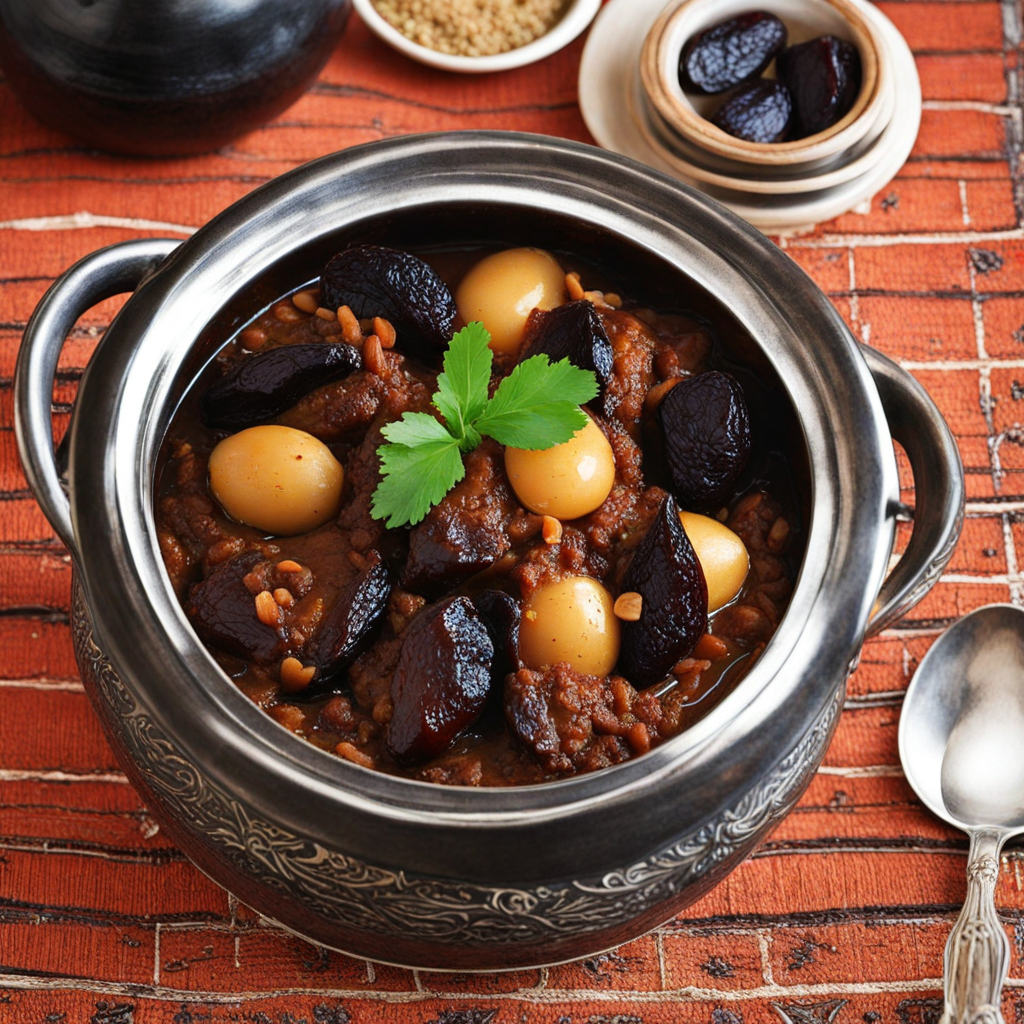Stuffed Bell Peppers
Stuffed Bell Peppers, or "Felfla Mahshi," are a vibrant and aromatic dish that captures the essence of Moroccan cuisine. These colorful bell peppers are typically filled with a savory mixture of spiced ground meat—commonly lamb or beef—combined with fluffy rice, fresh herbs, and a medley of warm spices such as cumin, coriander, and paprika. The spices not only elevate the flavor but also provide a delightful warmth, creating a dish that is both comforting and bold in taste. The peppers themselves, roasted to perfection, offer a sweet and slightly smoky contrast to the rich filling inside, making each bite a harmonious blend of textures and flavors. In addition to the meat and rice, the filling often includes finely chopped vegetables, such as onions, tomatoes, and sometimes raisins, adding layers of sweetness and complexity. A drizzle of olive oil and a sprinkle of fresh parsley or cilantro on top before baking infuses the dish with a fresh, bright finish. The peppers are then cooked in a savory tomato sauce that complements the stuffing and keeps them moist during the cooking process, resulting in a dish that is not only visually appealing but also bursting with flavor. Stuffed Bell Peppers in Morocco are typically served as a main course, often accompanied by a side of crusty bread or a light salad, allowing diners to savor every bite. The combination of vibrant colors, enticing aromas, and rich flavors evokes the essence of Moroccan hospitality and culinary tradition. As you explore this dish, you'll find that each ingredient plays a vital role in creating a memorable dining experience that reflects the warmth and richness of Moroccan culture.
How It Became This Dish
The History of فلفل محشي (Stuffed Peppers) in Morocco #### Introduction فلفل محشي, or stuffed peppers, is a beloved dish in Moroccan cuisine, showcasing the vibrant flavors and culinary traditions of the region. While many cultures have their own versions of stuffed vegetables, the Moroccan interpretation stands out for its unique spices, preparation methods, and cultural significance. This article delves into the origins, cultural importance, and evolution of فلفل محشي in Morocco, tracing its journey through the ages and its place in contemporary Moroccan society. #### Origins The origins of stuffed peppers can be traced back to the introduction of peppers to the Mediterranean region after the Columbian Exchange in the late 15th century. Capsicum annuum, the species most commonly used for stuffing, was brought to Europe by Spanish explorers who had encountered it in the Americas. As peppers gained popularity, they quickly became integrated into various cuisines, including those of North Africa. In Morocco, the use of peppers aligns with the country’s agricultural practices, where a myriad of vegetables are cultivated due to its diverse climates and rich soil. Peppers, especially the bell variety, flourished and became a staple in Moroccan gardens. The practice of stuffing vegetables is not unique to Morocco; however, the Moroccan approach incorporates a distinct blend of spices, grains, and proteins that reflect the country's culinary heritage. #### Cultural Significance فلفل محشي holds a special place in Moroccan culture, often associated with family gatherings, celebrations, and communal meals. The act of preparing stuffed peppers is a communal activity, frequently involving family members who come together to chop, mix, and stuff the peppers. This collaborative preparation fosters a sense of belonging and reinforces family ties, which is a core aspect of Moroccan culture. In Moroccan households, meals are often served as part of a larger spread, where various dishes are placed in the center of the table for everyone to share. فلفل محشي fits perfectly into this tradition, as it can serve as a colorful centerpiece that is both visually appealing and rich in flavor. The dish is often accompanied by traditional Moroccan bread, which is used to scoop up the filling, further emphasizing the communal aspect of dining. Moreover, فلفل محشي is also a dish that showcases the influence of Morocco’s diverse cultural tapestry. The country has been a crossroads of various civilizations, including Berber, Arab, and Andalusian influences. Each of these cultures has contributed to the way food is prepared and enjoyed, resulting in a unique Moroccan identity. The spices used in فلفل محشي—such as cumin, paprika, saffron, and coriander—reflect this amalgamation of flavors, making it a dish that tells the story of Morocco’s rich history. #### Development Over Time As Moroccan cuisine evolved over the centuries, so too did the recipe for فلفل محشي. Traditionally, the stuffing was made from a combination of rice and minced meat, often lamb or beef, seasoned with local spices and herbs. This classic preparation continues to be popular, but modern variations have emerged to accommodate different dietary preferences and tastes. In contemporary Moroccan cooking, one might find فلفل محشي stuffed with a variety of fillings, including quinoa, lentils, or even vegetables for a vegetarian option. The rise of health-conscious dining and the influence of global culinary trends have led to these adaptations. Additionally, the introduction of new ingredients, such as cheese or olives, has added further depth and complexity to the dish. Festivals and special occasions have played a pivotal role in the evolution of فلفل محشي. For example, during Ramadan, the holy month of fasting, families often prepare elaborate meals to break their fast. فلفل محشي can be featured as part of the iftar spread, highlighting its significance in both daily life and special celebrations. The dish's versatility allows it to adapt to various occasions, whether it be a simple weeknight dinner or a festive gathering. The globalization of food culture has also influenced the way فلفل محشي is perceived and enjoyed. Moroccan cuisine has gained international recognition, leading to the popularization of dishes like فلفل محشي in restaurants and cooking classes around the world. Chefs and home cooks alike are experimenting with the traditional recipe, infusing it with local ingredients or presenting it in novel ways. This fusion of tradition and innovation continues to keep the dish relevant in a rapidly changing culinary landscape. #### Conclusion فلفل محشي is not merely a dish; it is a celebration of Moroccan culture and history. With its roots tracing back to the introduction of peppers from the Americas and evolving through the rich tapestry of Moroccan culinary traditions, it encapsulates the essence of communal dining and family bonds. As the dish adapts to modern palates and dietary preferences, it remains a poignant symbol of Morocco’s vibrant culinary heritage. Whether enjoyed at a family gathering, during a festive occasion, or in a fine dining setting, فلفل محشي stands as a testament to the enduring legacy of Moroccan cuisine. Its evolution reflects the dynamic nature of food culture, where tradition meets innovation, and where every bite tells a story of the land, its people, and their shared experiences. As we savor this exquisite dish, we not only indulge in its flavors but also partake in a rich history that continues to unfold with each generation.
You may like
Discover local flavors from Morocco







